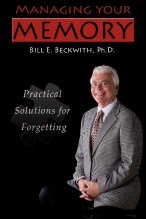Innovative Strategies to Treat Alzheimer’s
The latest article from the New York Times series, “The Vanishing Mind,” focuses on treatment for advanced Alzheimer’s disease. The article points to several programming methods that may be useful to many caregiver’s as well as facilities that wish to develop personalized dementia care programs that engage rather than medicate or force clients into group activities in which they have no interest or skills. They cite the Beatitudes Campus in Phoenix, AZ. Beatitudes is a continuing care retirement community focused dementia care on making Alzheimer’s patients clients receiving personalized care. They build programming on biography and personal history.
Beatitudes builds on the obvious rather than trying to medicate problems as they arise. They have implemented techniques that we have known for years into their programming rather than forcing power struggles with clients and have had many successes with residents who were kicked out of other facilities because they were “difficult cases.” I list a few examples to help us all rethink caregiving.
We have known for years that bright light therapy improves mood, reduces “sun downing,” and resets circadian rhythms. Many dementia facilities are dark and restrict residents exposure to natural direct light. Putting brighter lights in fixtures and getting clients out in the sun decreases depression and helps to preserve functional abilities longer.
The visual cliff is an apparent but not real drop from one surface to another that is used to test for depth perception in infants (and often dementia unfolds as reversed development). This illusion returns in many with dementia and can be used to reduce wandering. It is simple to use. Place a rectangular black carpet or tiles in front of exits.
Incontinence is a major problem for many and is often the trigger for placement in a facility or becomes a problem after placement because some staff find it easier to change a diaper than to be proactive. The solution is simple. Schedule toilet breaks during the day (say every hour) to keep bowel and bladder empty. These breaks can be part of the programming and treated as a routine activity. It keeps clients out of diapers longer and preserves dignity.
Group events are convenient and efficient for facilities and are a stable part of activity programming. But some clients have always been loners and would never enjoy group activities. Others cannot attend to the distraction of others in group activities or can no longer understand the rules. They need one-on-one programming and activities. Why not have clients participate in normal activities they used to do like help make their bed? They could be helpers to staff rather than passive observers or nuisances.
I hope this article provides some useful ideas about how to treat Alzheimer’s in later stages. There is so much we can do to improve the quality of life for our clients. As Montessori Programming for dementia care proves, an educational approach to caring for the cognitively impaired works. Maybe teachers should build the care units rather than health professionals.




